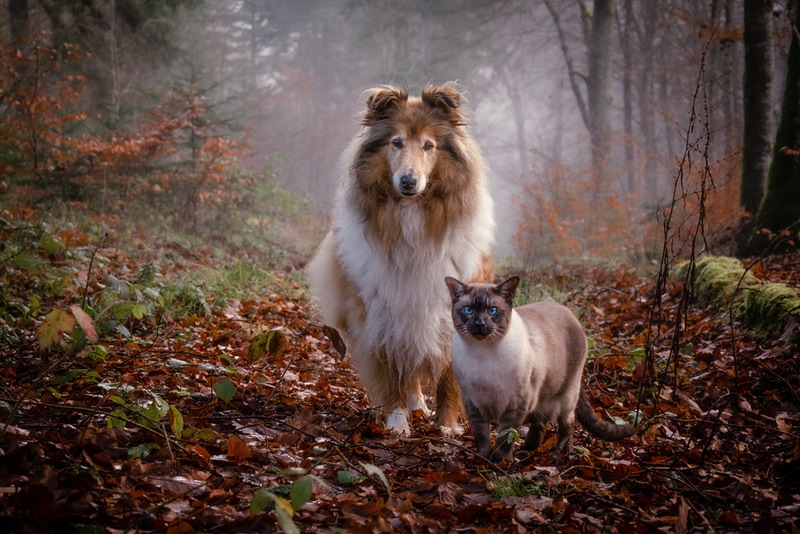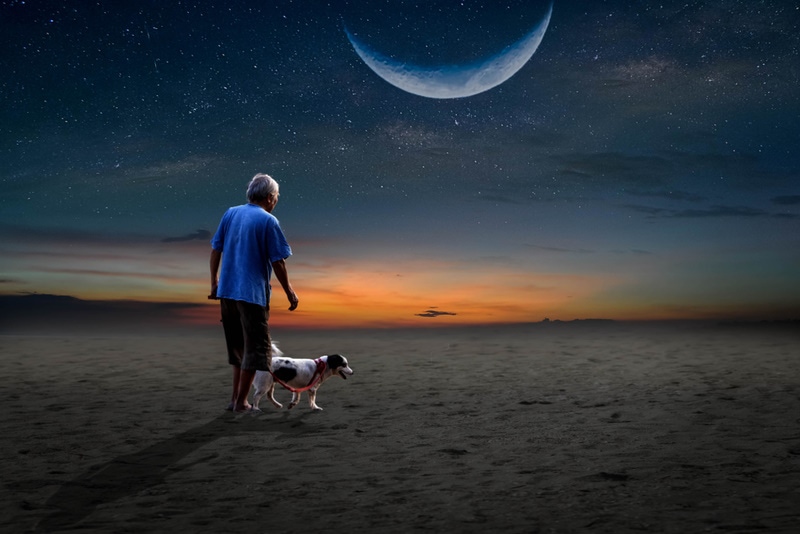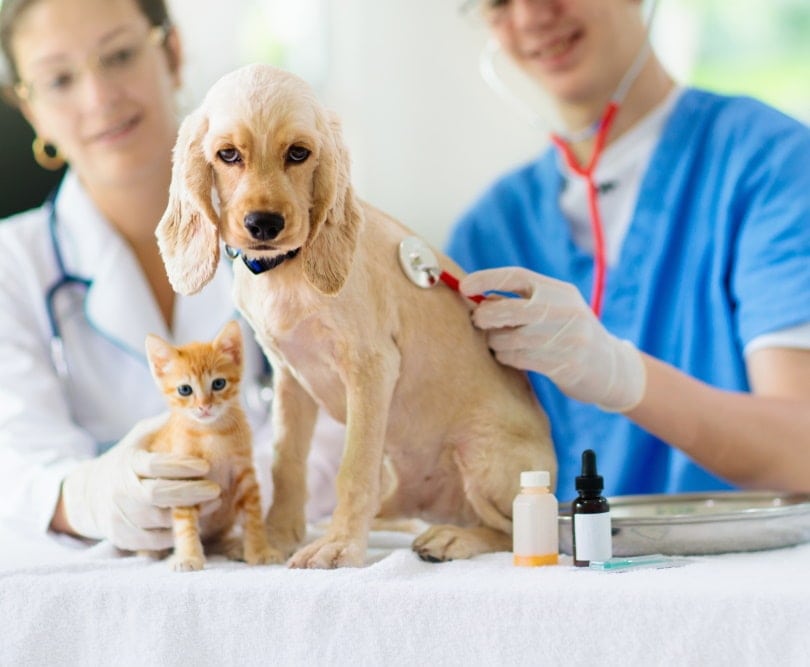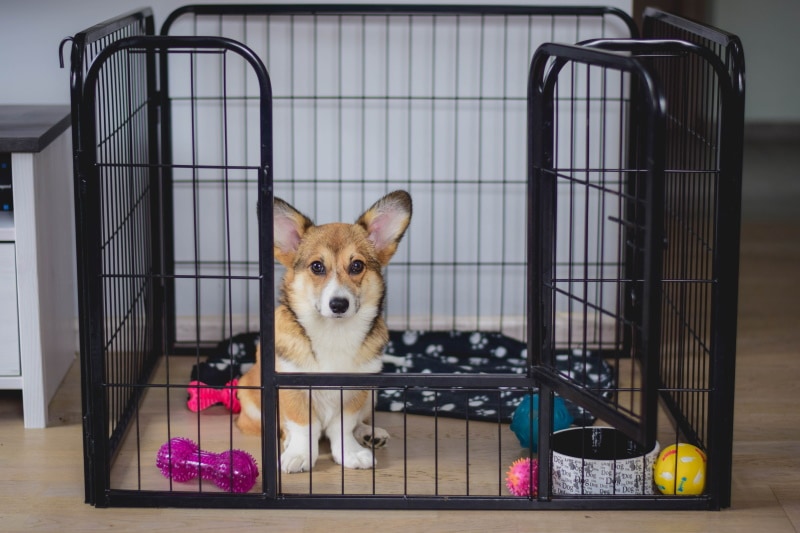Does The Full Moon Affect Dogs and Cats? The Myth Unveiled
By Lorre Luther
Updated on

Moon cycles last about a month or 29 ½ days when viewed from our beautiful blue planet 1. Full moons are said to bring out strong emotions and zippy vibes. According to popular beliefs, people and animals can sometimes become restless and anxious under its influence.
Dogs, coyotes, and wolves are notorious for howling, growling, and barking at full moons, and cats are alleged by many to be driven into hiding by the moon’s powerful energy, but there’s little scientific support for these theories 2. Regarding cats and dogs, the evidence is a bit mixed about the moon’s influence on their behavior.
What Are the Phases of the Moon?
There are four moon phases: new, first quarter, full, and third quarter. Waning phases occur between the new and full moon, and waxing periods end the cycle.
Are There Reasons to Believe the Moon Affects People and Pets?
The moon may impact human and animal biological processes, but little is known about the extent or why.

Cats and Dogs
Researchers discovered 3 that veterinary emergency room visits tend to increase when a full moon is in town, but other scholars looking at different data found no such link 4. One study reviewed admissions to the University of Melbourne Animal Emergency Centre and determined the moon had no real impact on the number of admissions.
According to a study conducted at Colorado State University Veterinary Medical Center, on the other hand, cats’ risk of a visit to the emergency room increases by about 23 percent 5 around full moons; the risk for dogs is even higher at 28 percent. A study published in 2000 6 determined that there are more human hospital visits for animal bites during full moons than during other periods, while others have found that no such link exists 7.
There’s often evidence of correlation but not causation when it comes to the moon’s impact on animal behavior. Under certain circumstances, it may be possible more people and pets end up in emergency rooms during full moon periods, but there could be all sorts of reasons why. There could be more accidents and hospital admissions during full moons because people are out and about more, taking advantage of the bright light.

People
People have been associating full moons with strange human behavior for millennia. In the first century AD, Pliny the Elder blamed the moon for making people crazy and speculated it had something to do with the increased dew formed during full moon periods. There are suggestions that the moon’s phases can influence the symptoms of some mental health patients, but others have reached opposite conclusions.
Stories abound of increased birth rates and high numbers of accidents and hospital trips during full moons, but many scientific studies have come to other conclusions. Scholars often argue that increased incidents of strange behavior could be explained by sleep deprivation since full moons are so bright, which can make it difficult for some people to settle in.
Coral, Worms, Insects and Lions
There are marine animals whose reproductive cycles operate in time with lunar cycles. Certain types of tropical coral reproduce during full moons, and marine annelid worms begin their reproductive processes during waxing moons. The moon may also have an impact on some insects’ reproductive cycles.
Lions appear to be better at hunting on moonless nights. Interestingly, lions tend to attack humans most frequently in the weeks following the full moon, according to research published in PLOS ONE that studied the link between darkness and lion attacks on humans in Tanzania.

What Are Supermoons and Blue Moons?
The term supermoon is used to describe when the moon is full at the same time that its orbit is closest to Earth. Because the moon is so close to Earth during these periods, it appears to be larger and brighter than at other times.
The technical name for the phenomenon is a perigean full moon. Tides tend to be stronger during supermoons as the moon’s proximity to Earth generates increased gravitational pull. Blue moons occur when there are two full moons in one calendar month. February can’t have blue moons, and the event only happens every 33 months or so.
Conclusion
The moon travels around the earth in a cycle that lasts about a month and goes through four phases. Full moons are said to bring with them heightened emotions and strong anxious energy. According to folk wisdom, wolves and dogs are alleged to particularly enjoy howling at full moons, and many suggest that pets may be full of get up and go around this time, but the scientific evidence on the topic is mixed.
Some studies suggest that cats and dogs end up in emergency rooms more often during full moon periods, but researchers have come to different conclusions regarding whether animals are more inclined to bite when the moon is shining in all its glory.
Featured Image Credit: Lyudmyla Pokryshen, Shutterstock










